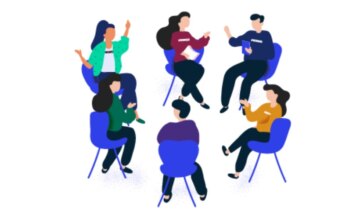Six Key Steps to Building an Optimization Culture

This post is the last in our series on B2B marketing optimization and how to take your marketing efforts to the next level.
So far, this series on optimization has covered a number of ways in which you can improve your B2B marketing through optimization across the entire customer journey.
As part of this process, you will have likely identified and set goals for your optimization efforts. But making optimization an ongoing process requires a cultural change too — without this, individual contributors will not pursue continual improvement proactively, putting your organization at risk of decay and decline.
To make this happen, we’ve put together a few steps that will help you build an optimization culture not just in marketing, but across sales and customer success too.
So, without further ado, here’s how you can optimize the customer journey.
1. Get buy-in from the top on an optimization vision
Before you can get other teams to follow you on an optimization journey, you need to make sure you have support from everyone involved.
As you dismantle barriers of siloed teams and targets, set and shape a vision for customer journey optimization. This is an ideal point to bring up optimization because you will already be talking about working collaboratively on targets. Taking the vision to a higher level should be part of your conversation here.
2. Work optimization into objectives and key results
As you set collaborative targets, look to also establish measures that demonstrate customer journey optimization in action.
Regardless of the performance review and management techniques your organization uses, or whether they are formal or informal in nature, look to get optimization on the to-do list for everyone.
3. Make sure everyone knows about the optimization vision
If you want everyone to work towards optimizing each part of the customer journey — particularly if you will be setting objectives and targets — everyone will first need to know that there’s a shared vision. If they don’t know, then they won’t take the necessary steps.
Schedule a time to come together with leaders from sales, customer success and more broadly across the business to share the customer journey optimization vision with everyone.
If you’re part of a large and distributed organization, webinars can also be highly useful as a communications platform for businesses to get the word out.
4. Allow anyone to suggest and make changes in pursuit of optimization
Great ideas can come from anywhere. However, to make them a reality, everybody needs to feel they can both suggest ideas and that they are empowered to put them into action.
Cited earlier, our post, “How to Make Your Marketing Team More Agile” also notes that removing a fear of failure is a critical step to getting people to shift into a ‘test and learn’ mentality.
Within recent years, the Japanese idea of kaizen (translated as “change for better”) has become popular as an approach that allows employees to suggest and make changes. Toyota is particularly famed for this approach and has reportedly implemented the vast majority of changes that those on the front line have put forward. All of this has energized employees.
5. Encourage knowledge sharing to celebrate success and learn from what doesn’t work
To both maintain the momentum for customer journey optimization and spread the word about what’s working well, make sure that the results — both effective and ineffective — are visible for people to see.
One practice from the world of software development is the sprint retrospective. The agenda is simple and typically just has three points: what worked well; what could be improved; and what should be done next time? ON24 client Atlassian has a guide on how to run a retrospective, but these points could also be incorporated into any existing meetings you currently have.
To spread this knowledge even further, consider adding these points to your company’s own online communication spaces — whether that’s on an intranet, a company wiki or even a channel on a messaging app such as Slack or Microsoft Teams.
6. Reward and incentivize optimization efforts across your organization
To keep up the good work, make sure you acknowledge customer journey optimization efforts, even if an attempt didn’t result in a positive uplift.
How you should best do this is up to you, but this should be a regular occurrence. Even if optimization is tied to annual targets, rewarding efforts on such a time scale is unlikely to be enough to reinforce positive behavior. Both informal rewards, such as buying snacks for the team or even just saying thank you, and more structured incentives such as those connected to compensation, should be frequent enough to keep optimization front of mind for everyone.
Good luck with your efforts on making optimization a success in your organization!
If you’re interested in seeing how ON24 can transform your marketing efforts, sign up for a live demo to see the platform in action.